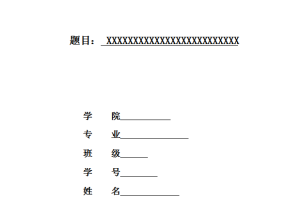[摘要]:梅州市为客家人比较集中的聚居地,梅县话不仅是该地主要方言,更是客家方言的代表话。本文以广东梅县话为例,考察客家方言与古代汉语语音的源流关系。内容主要包括三个方面:一是声母的保留情况,其中对轻唇音、舌上音以及尖团音进行重点描写。二是韵母的保留情况,列举与古汉语重合的方言事实,进一步佐证客家方言对古汉语具有传承性这一观点。三是调值与调类,利用共时描写、共时比较、历史比较法等,证明梅县话中的阴入与阳入对古汉语的清、浊与次浊入声进行了成套严整的保留。
[关键词]:客家话; 古汉语; 梅县; 语音
[Abstract]:Meizhou is the concentrated settlement where Hakka people live together. Meixian accent is not only the main dialect in Meizhou, but the representation of Hakka dialect. In case of the Meixian accent, this paper studies the relationship of Hakka dialect and the phonetics of ancient Chinese. The main contents of this paper consist three parts. One of them is the reservation of consonants. In this part, I describe the labiodental sound, alveolar sound and Jian & Tuan sounds emphatically. The second part is the reservation of vowels. In this paper, in order to proof that Hakka Dialect has inherited the phonetics of ancient Chinese, I list some dialect facts, which coincide with the ancient Chinese. The last part concerns to the tones. Using the Synchronic description, Diachronic comparison and Historical Comparative Approach, this paper investigates the set of reservations of the entering tone in the ancient Chinese.
[Key words]: Hakka dialect ; ancient Chinese; Meixian; phonetics
目录
导 言………………………………………………………………………………………………………………………. 1
一、声母的保留情况……………………………………………………………………………………………….. 1
(一)古无轻唇音…………………………………………………………………………………………….. 1
1、非母字…………………………………………………………………………………………………… 2
2、敷母字……………………………………………………………………………………………………. 2
3、奉母字……………………………………………………………………………………………………. 2
4、微母字……………………………………………………………………………………………………. 2
(二)古无舌上音…………………………………………………………………………………………….. 3
(三)见精组字………………………………………………………………………………………………… 3
(四)微喻疑影母字…………………………………………………………………………………………. 3
二、韵母的保留情况……………………………………………………………………………………………….. 4
(一)入声韵的成套保留…………………………………………………………………………………. 4
(二)阳声韵[-m]尾的保留……………………………………………………………………………… 5
三、声调的保留情况……………………………………………………………………………………………….. 5
结 语………………………………………………………………………………………………………………………. 6
参考文献………………………………………………………………………………………………………………….. 7
文献综述………………………………………………………………………………………………………………….. 8
致 谢…………………………………………………………………………………………………………………….. 10





